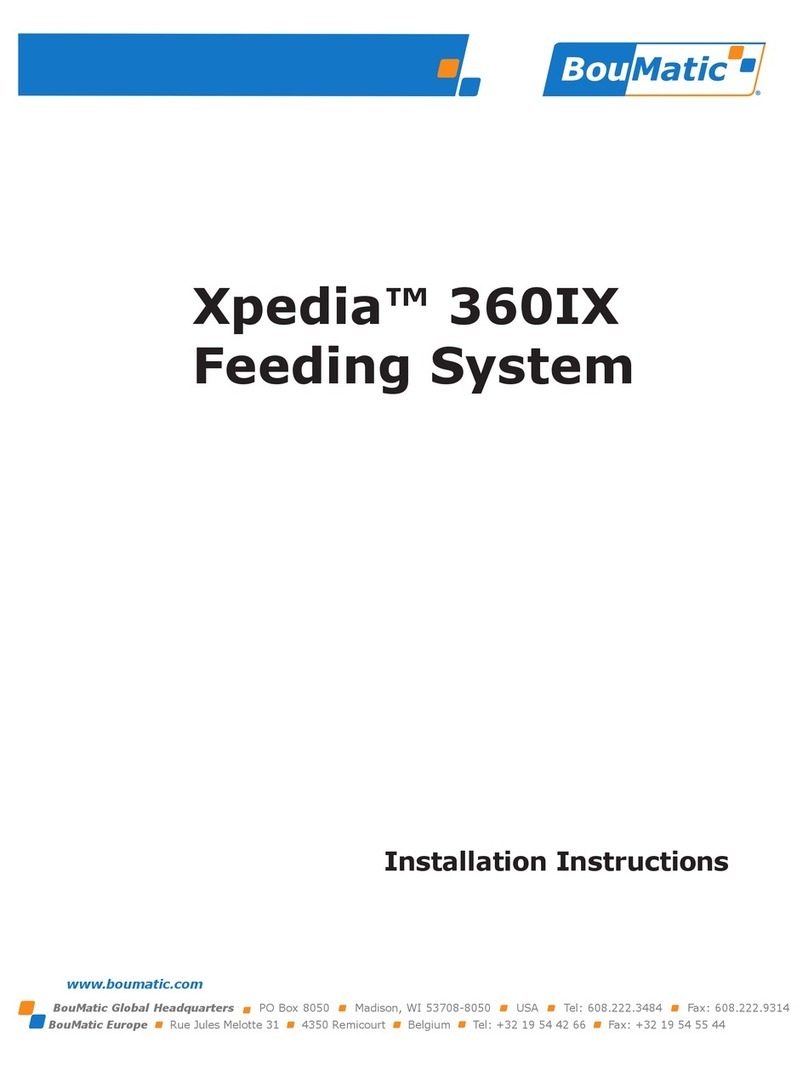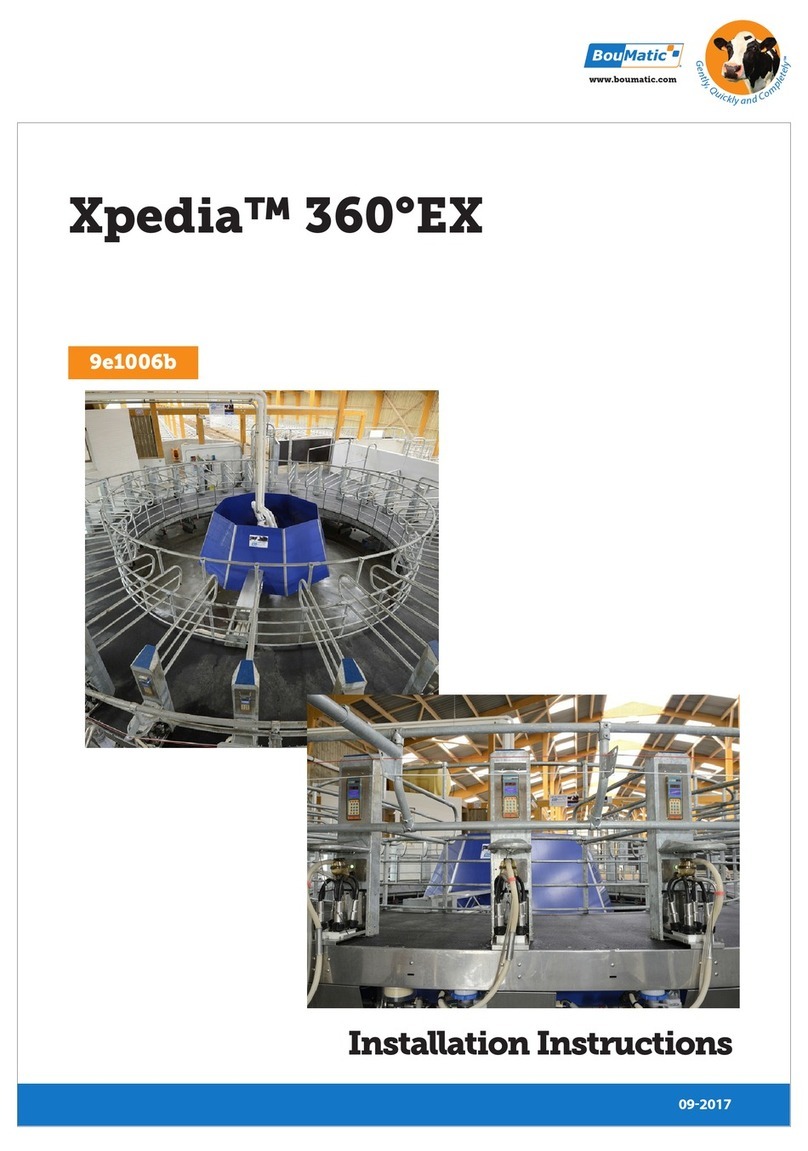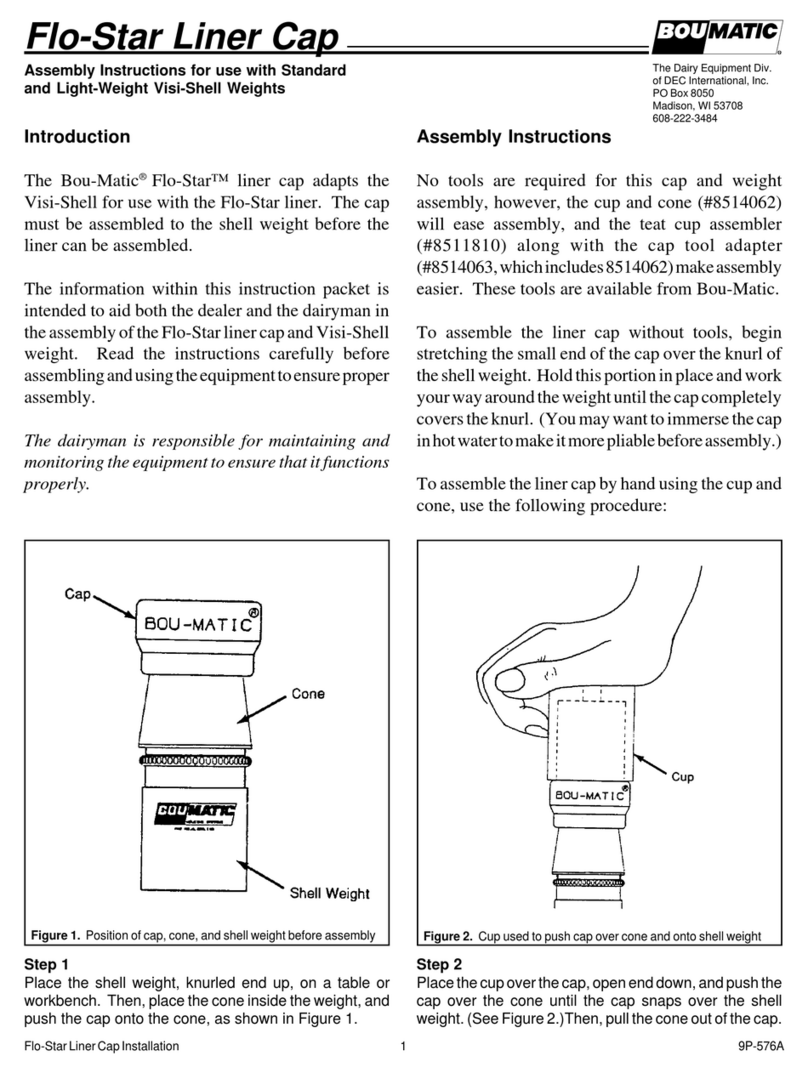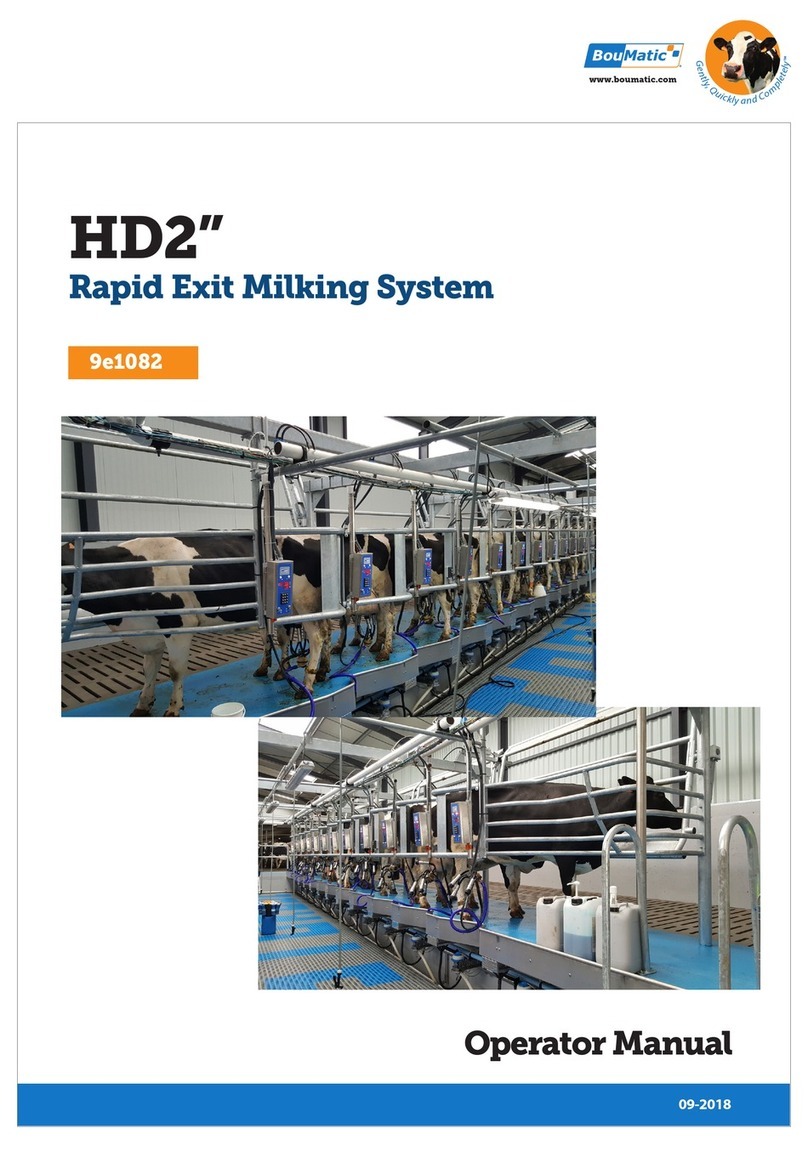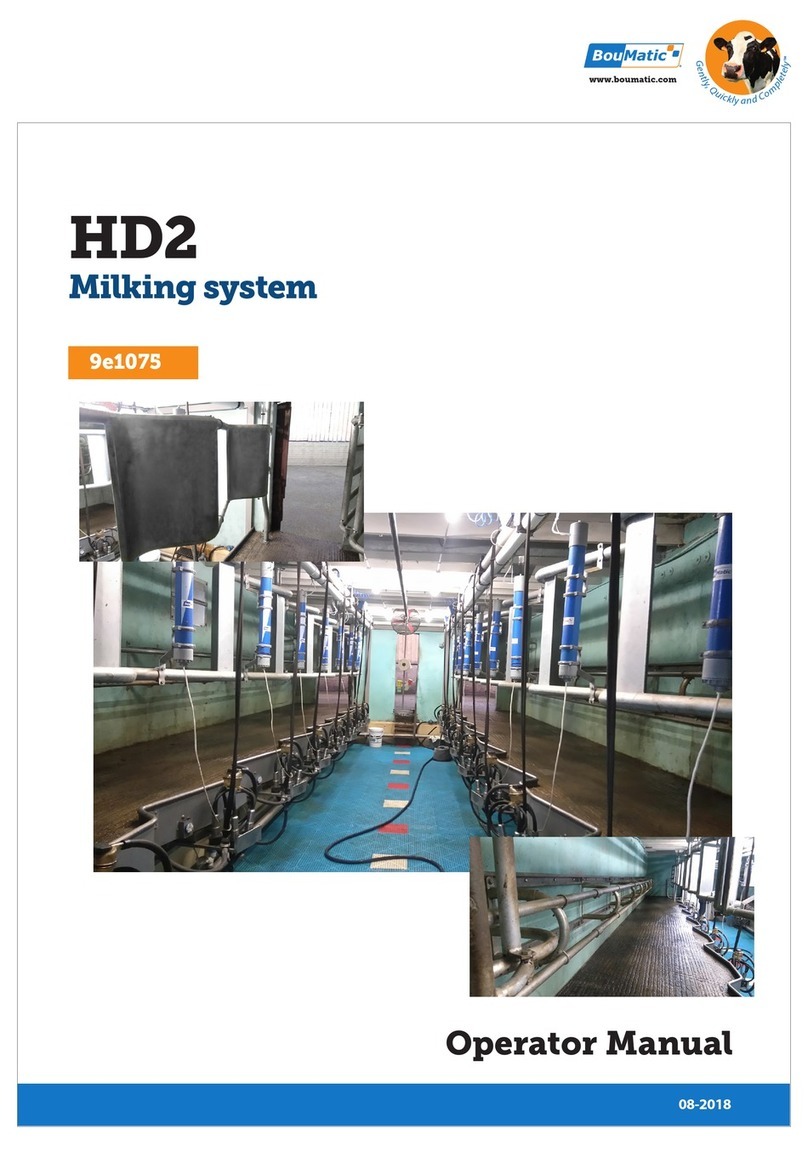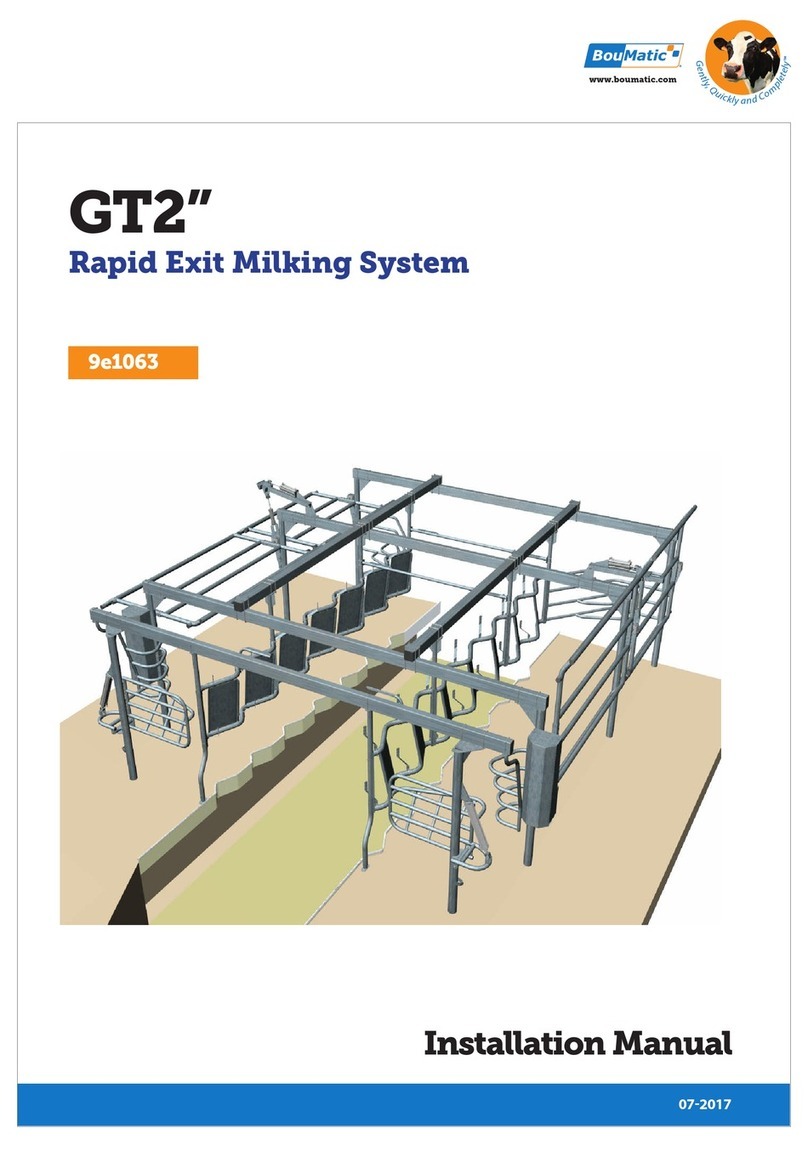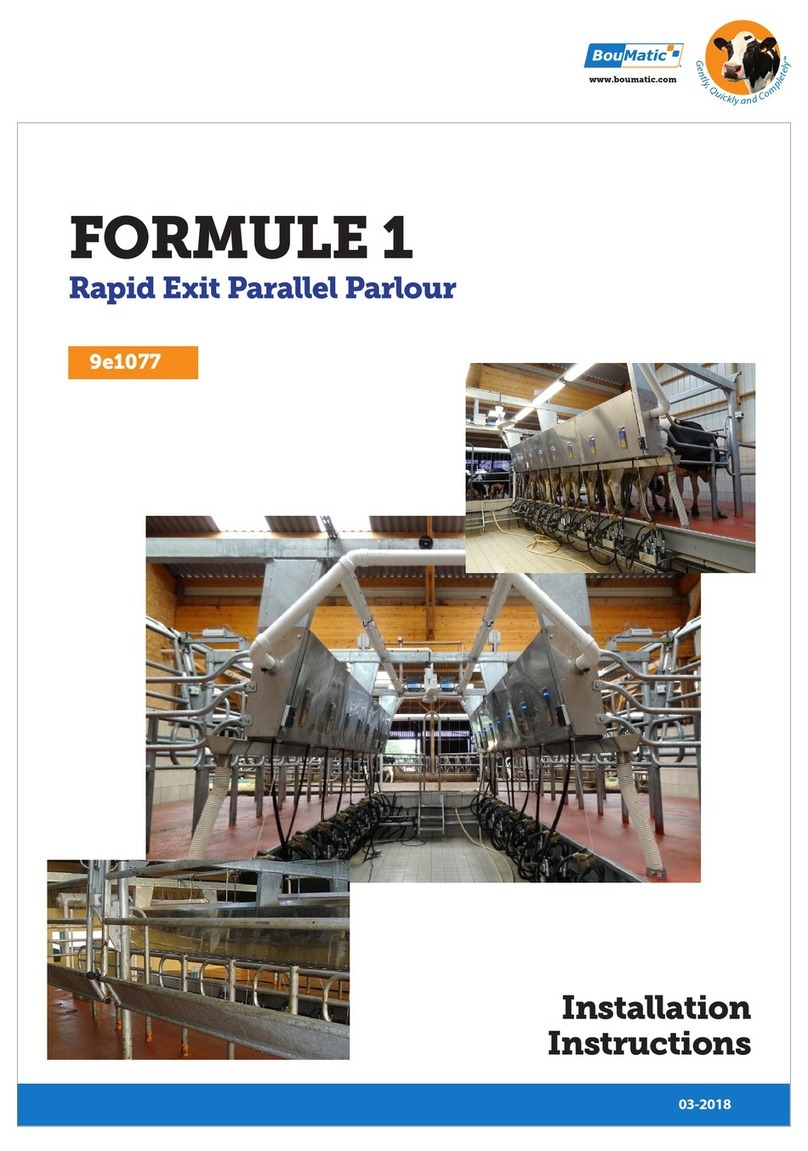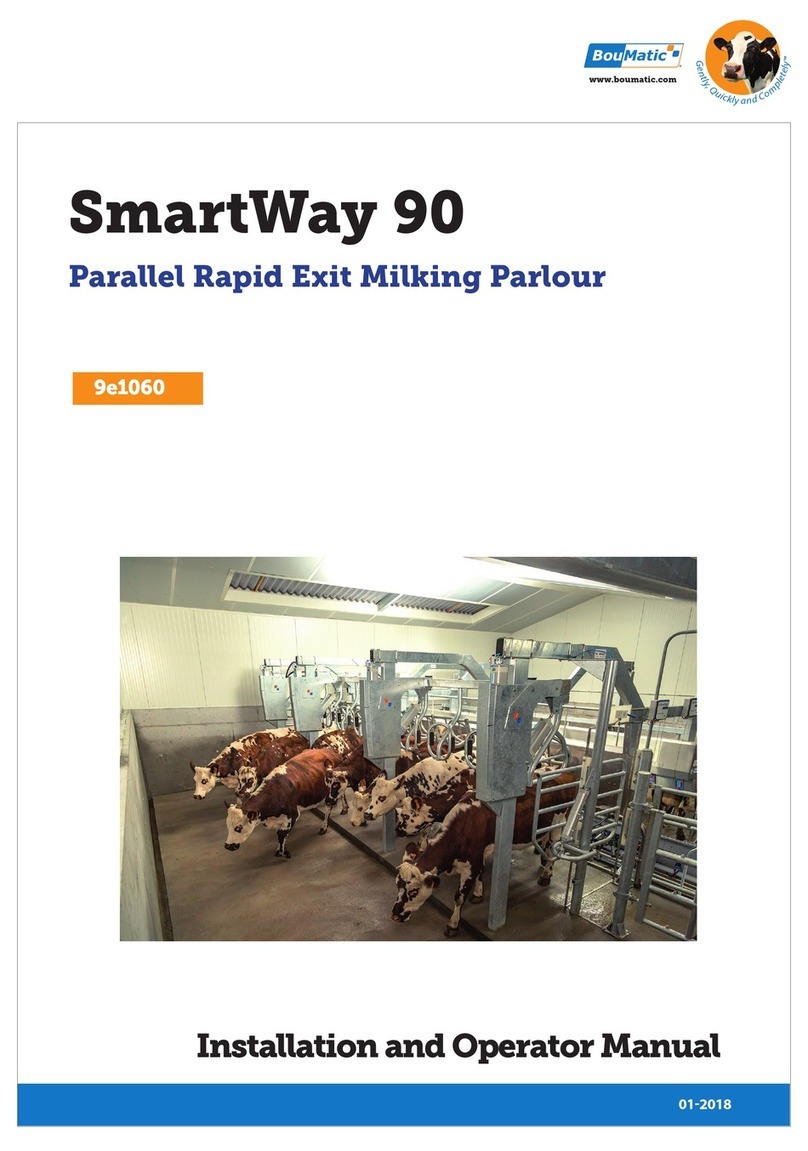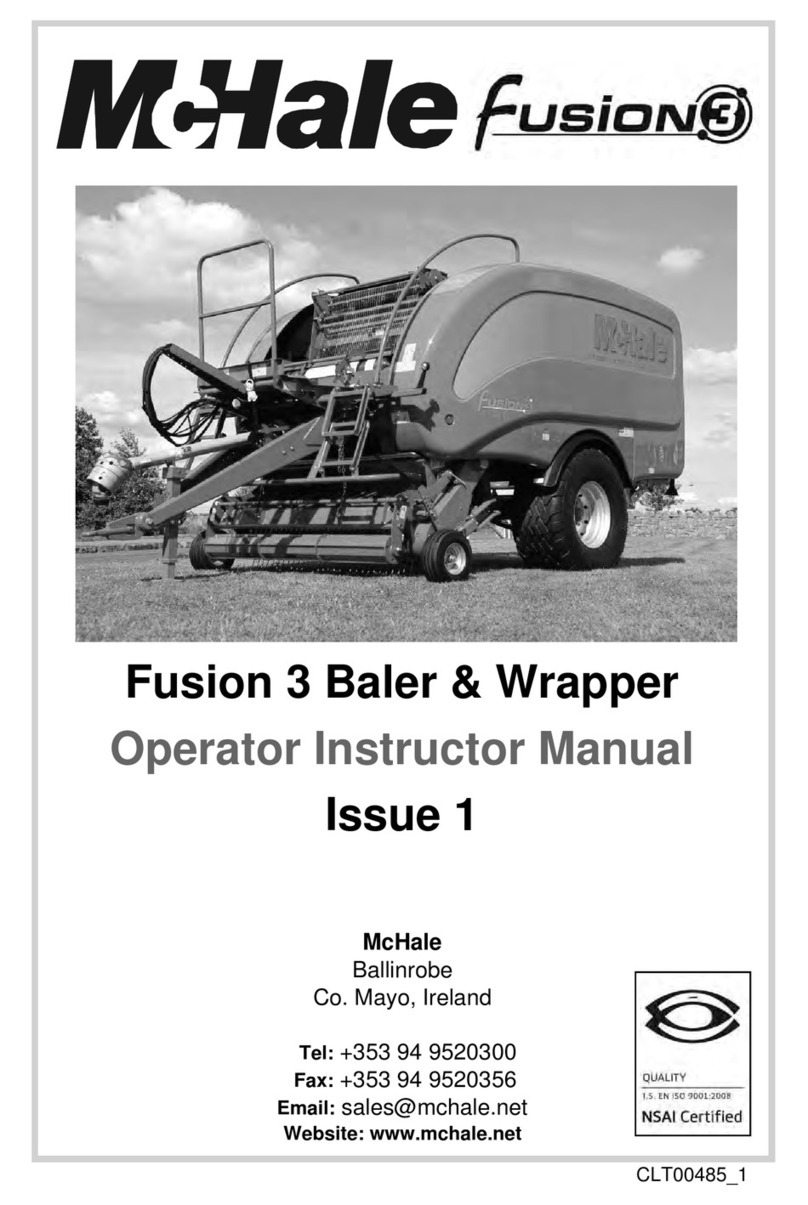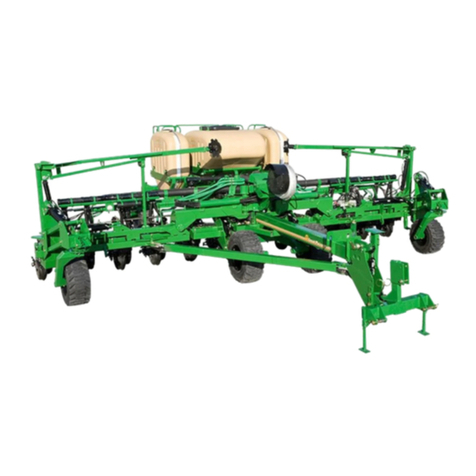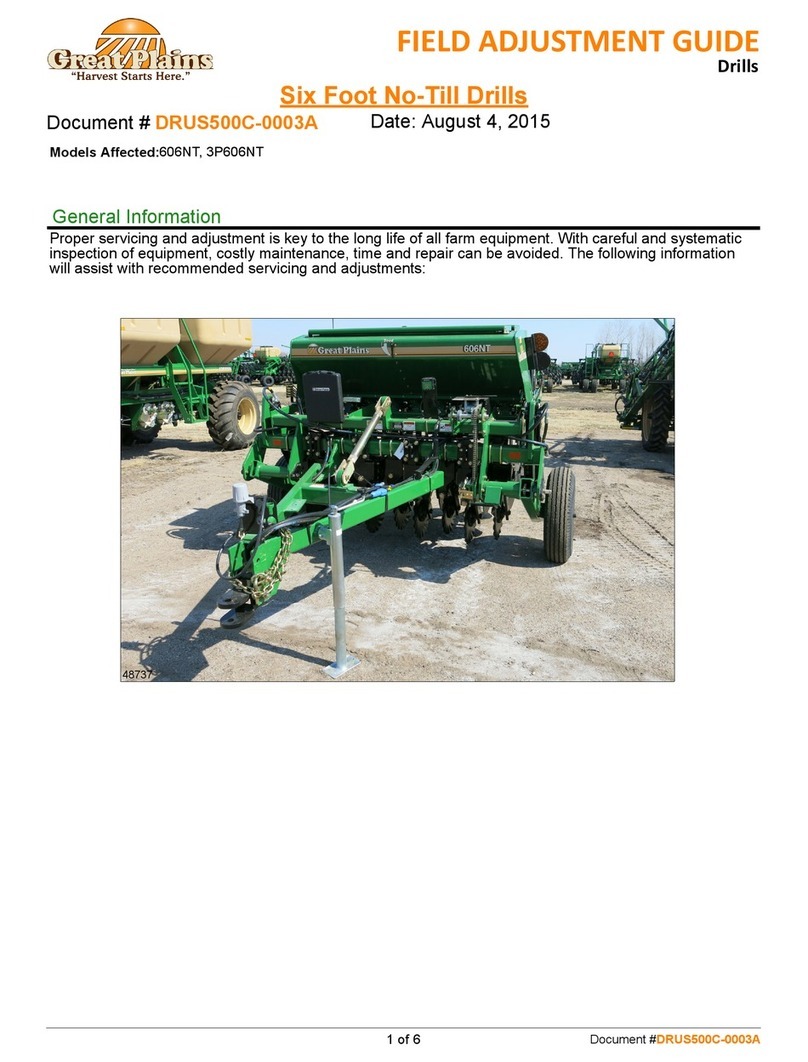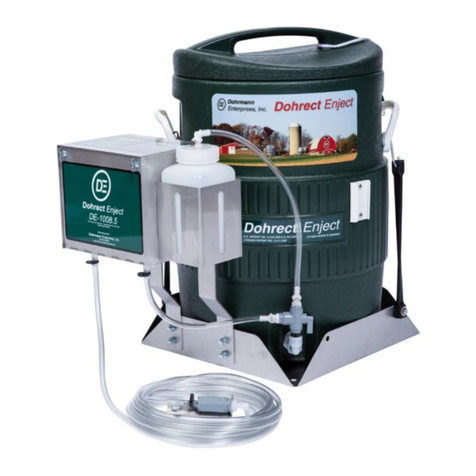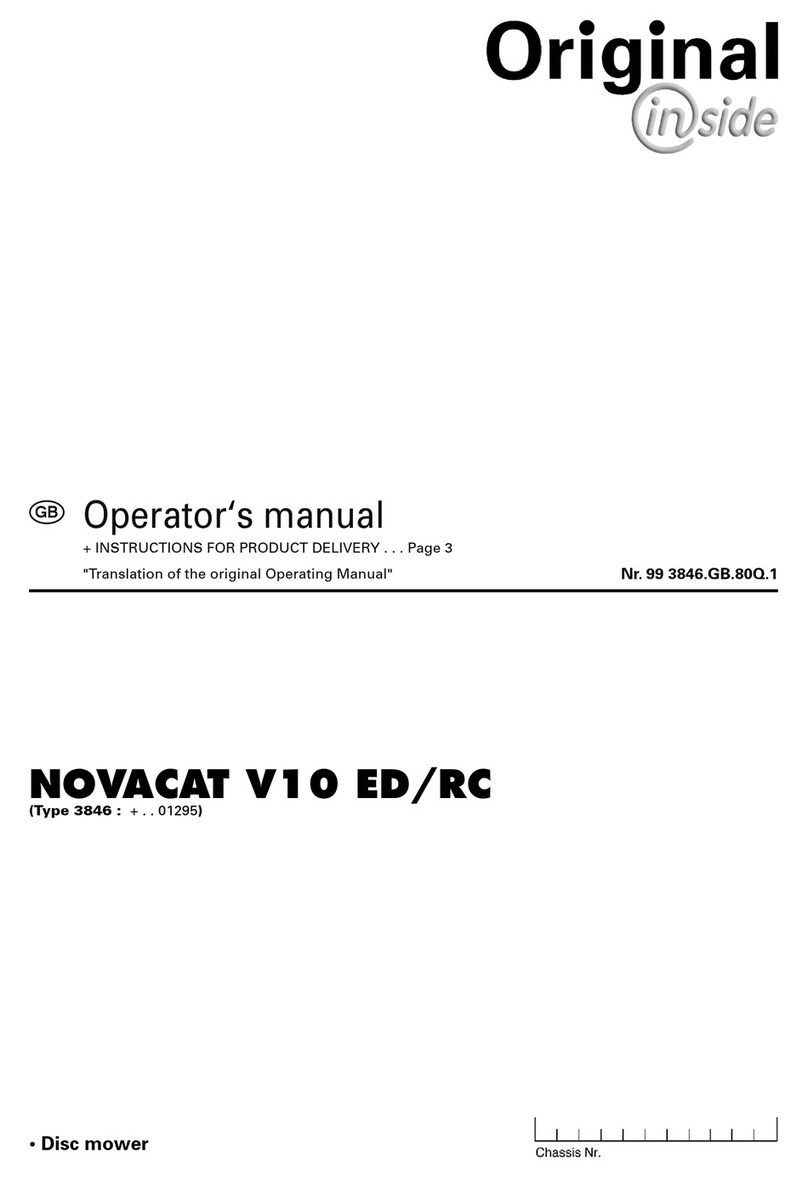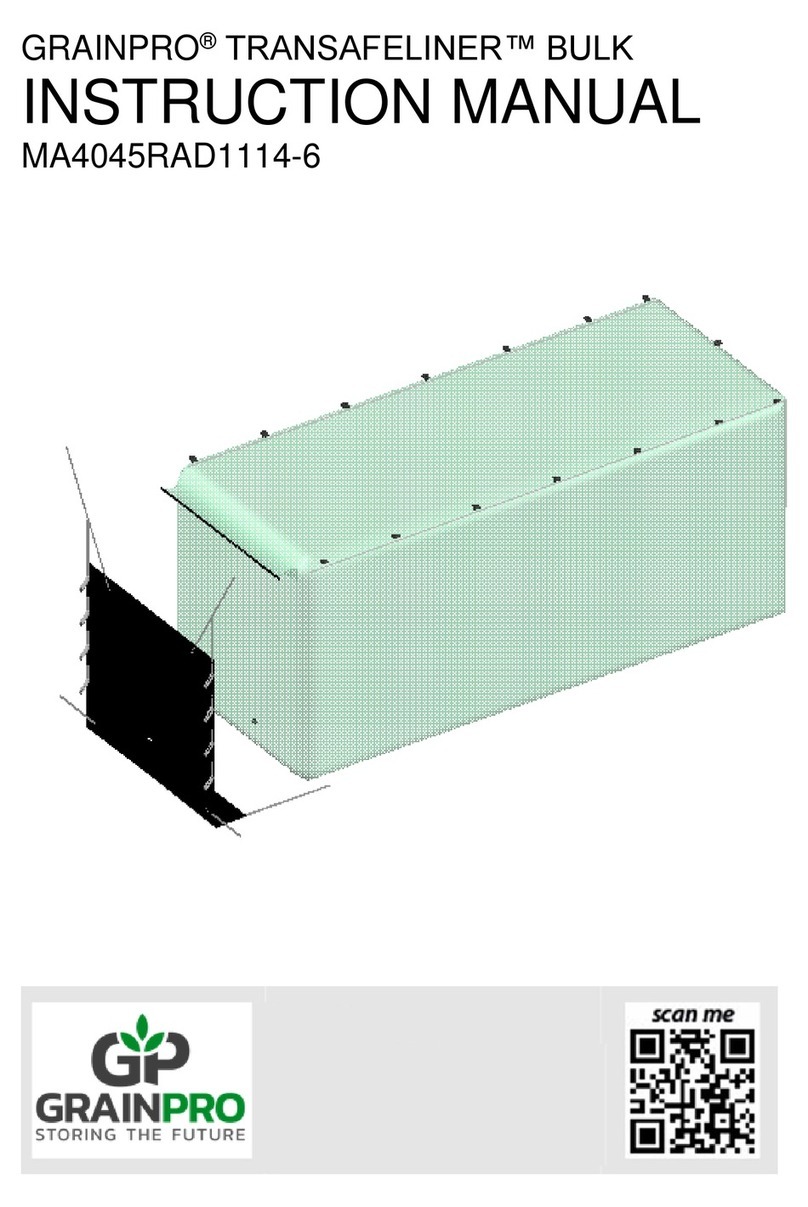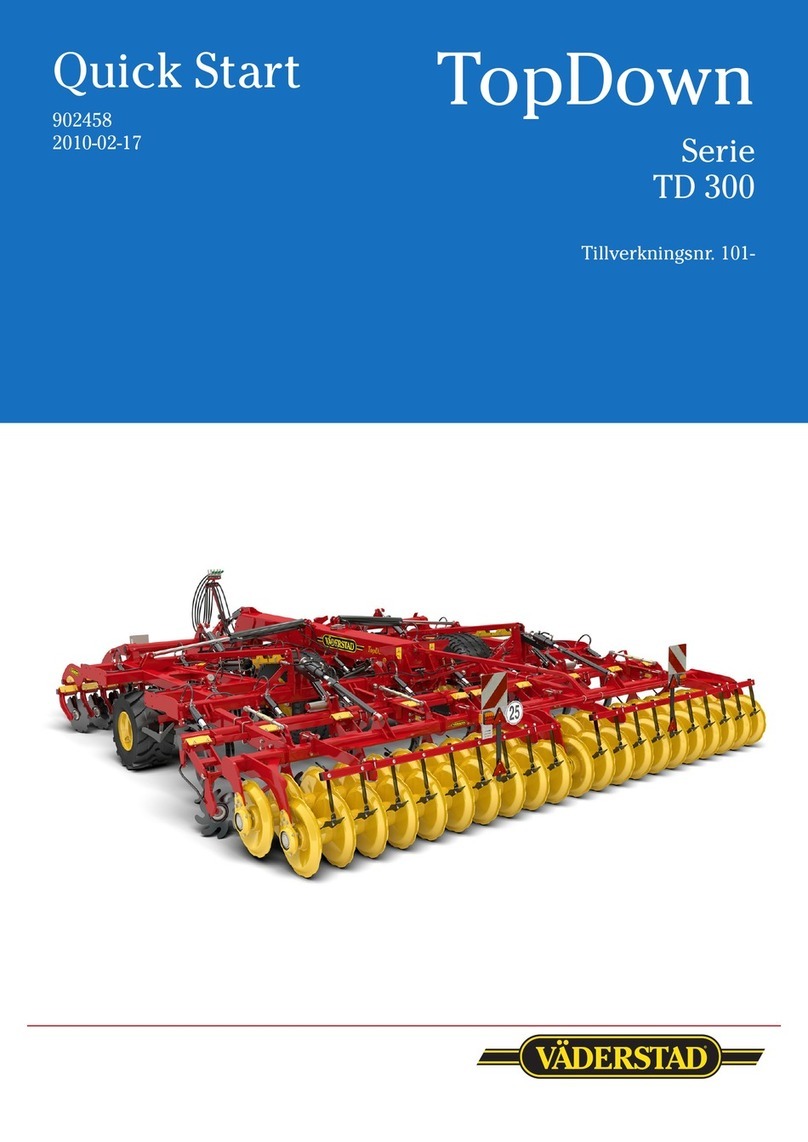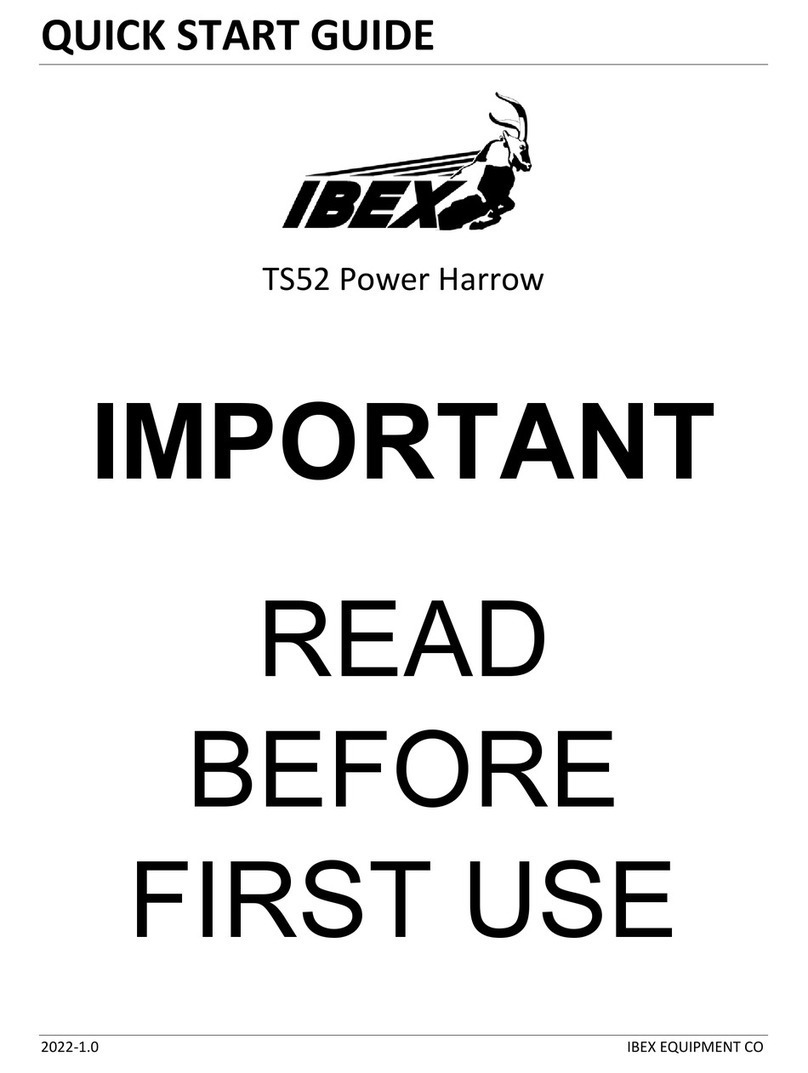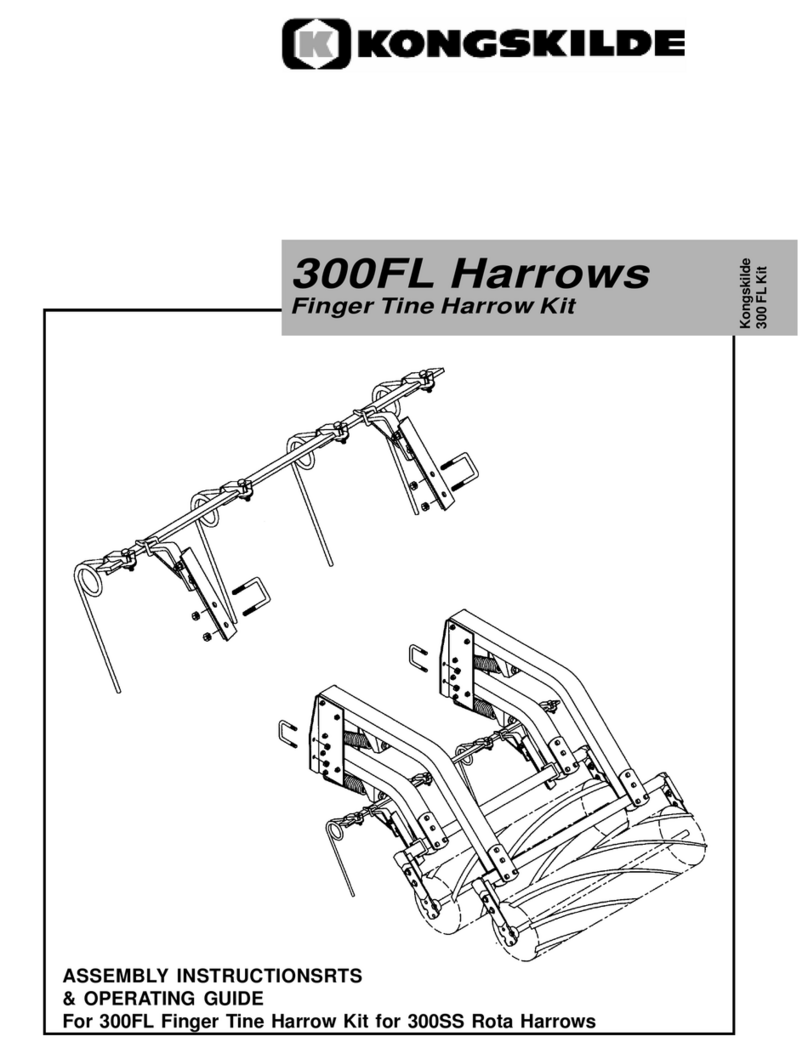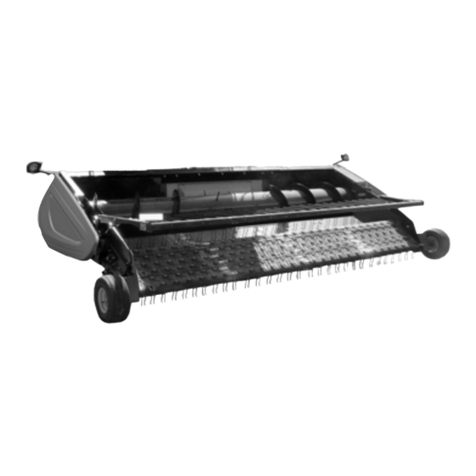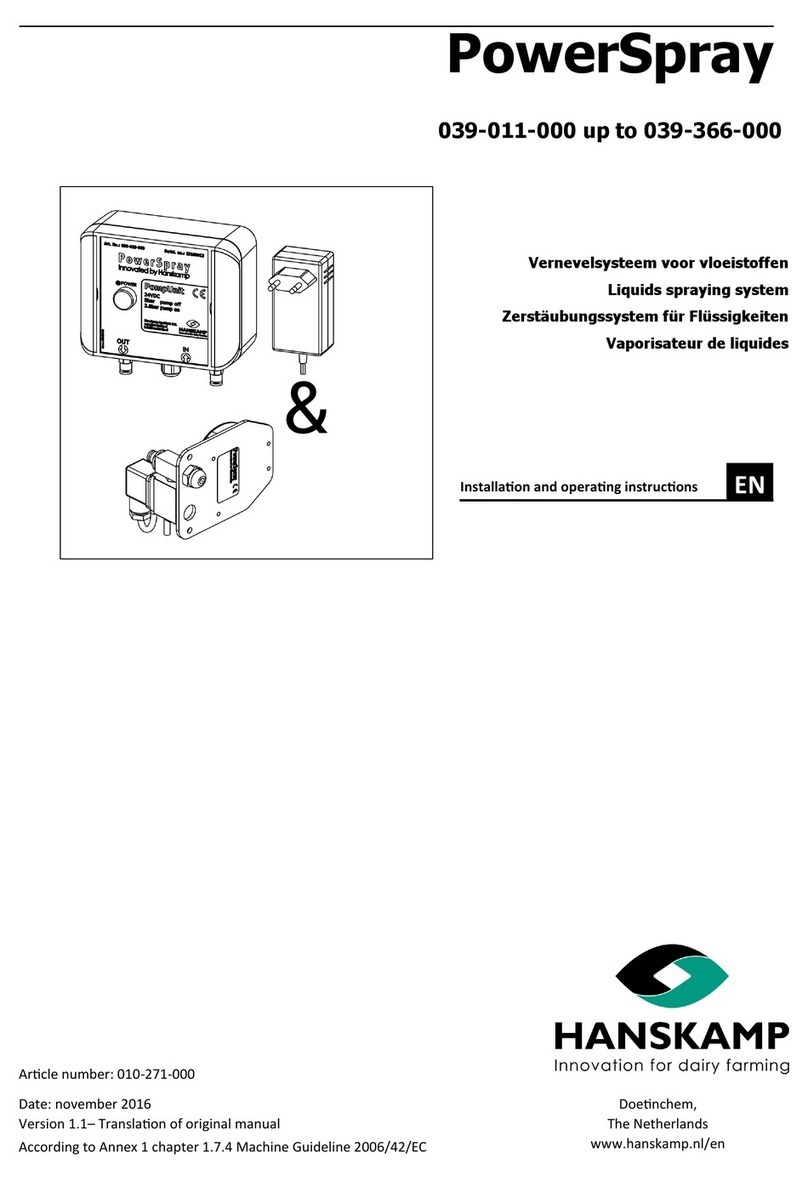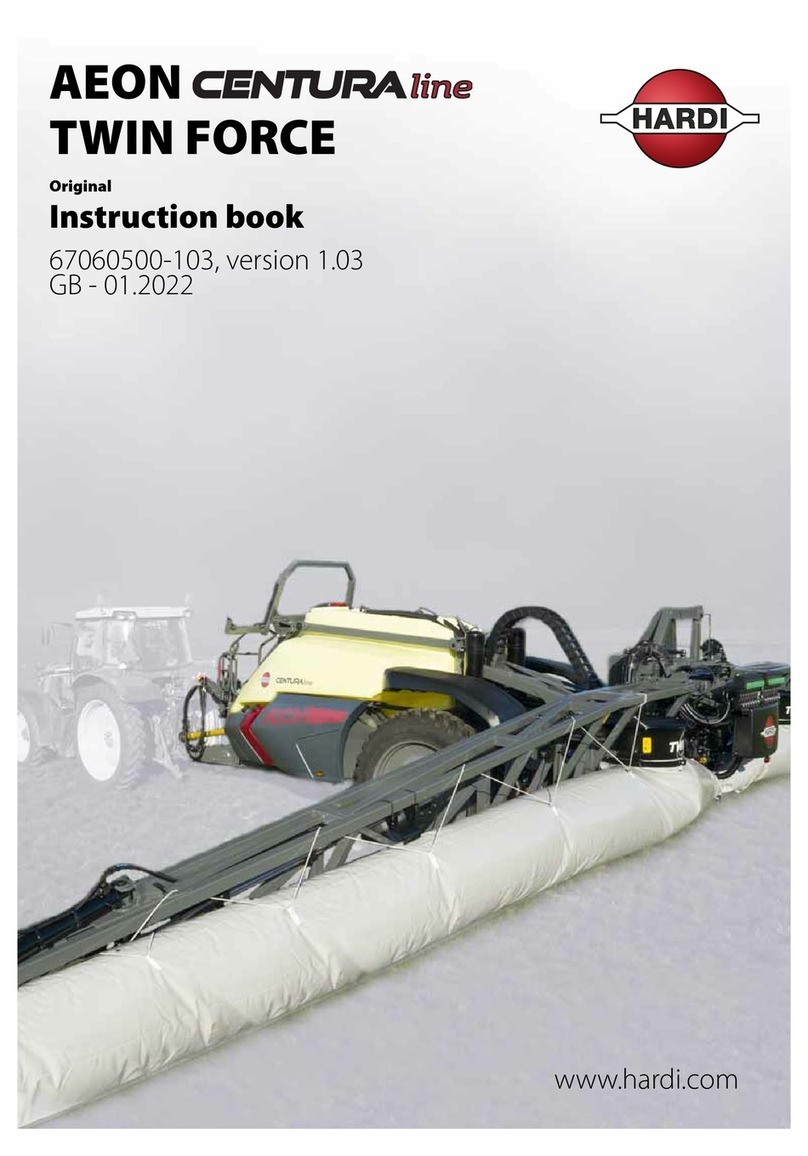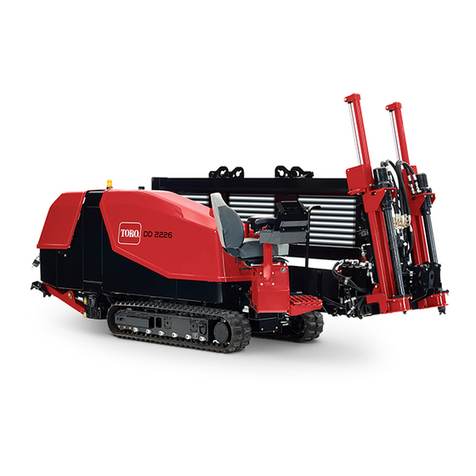
9e1026a 20 Tie Stall Operation, Service and Maintenance
4. Features
4.1 AMI 5450 Milking System
Each control contains a microcontroller that operates
over 14 MIPS (Million Instructions Per Second) to
give fast and accurate control of all the milking func-
tions. This speed allows continuous monitoring of the
milk production during the milking of a cow (while
providing optional pulsation for each cow). The AMI
5450 milking system uses the BouMatic PRISM Net-
work to send milking data to a PC with SmartDairy
software, adjust the various parameters that con-
trol the milking of a cow, and remotely update the
software that controls the AMI 5450 milking system
when connected to a PC with SmartDairy software.
The AMI 5450 milking system has over 36 param-
eters to help provide optimal milking performance.
Some of the parameters are: take-off ow rate, let-
down delay, take-off delay, claw drop, claw lift, claw
lift time out, reattach delay, maximum milking time,
optional pulsation, etc.
4.2 Features and Parameter
Settings
The parlor and milking parameters are adjusted at
the dealer or dairyman’s PC and use the PRISM net-
works to adjust all the parameters. The same PRISM
network is also used to upgrade the software in each
control. Changing the software typically takes less
than six minutes for the entire parlor for each con-
trol type. All parameters are stored in the controls so
that in the case of a power outage they are available
immediately when power is restored.
Each control contains the following major sections:
microcontroller, communication circuit, and auxiliary
inputs and outputs.
All outputs have LED indicators to help with trouble-
shooting. See Table 1. All auxiliary outputs have pro-
tection for shorts. If a fault occurs, the short should
be removed. Then turn the output off and back on,
to reset the protection circuitry.
4.3 Control Parameters
The milking and pulsation parameters are set to give
the AMI 5450 the capability of milking cows. When
the parlor type is selected during the conguration the
milking parameters are then sent to the correct con-
trol.
See Tables 2 and 3 for views of the parameters that
are time dependent.
4.4 Milking Parameters
See Table 2.
See Figures 21 and 22 on page 23.
Takeoff Flow Rate: The Takeoff Flow Rate is used
to determine when the milking unit is removed from
the cow. A higher ow rate setting will remove the
milking unit sooner and leave the cow “wetter”.
Takeoff Delay: The Takeoff Delay is the time from
a no milk condition to when the detacher will detach.
A longer time period will increase the milking time
of a cow.
Vacuum-On Delay: The Vacuum-On Delay is the
time from the activation of the detacher cylinder to
when the shutoff opens. This allows the milker time
to prepare the claw for attaching before the vacuum
is applied.
Let-Down Delay: The Let-Down Delay starts at the
rst attach of a cow. This time delay will cause the
detacher to remain attached for the set time regard-
less of milk ow. The purpose of the delay is to give
the milker time to attach the milking unit to the cow
and adjust the milk hose support. If the detacher is in
Automatic mode and there is no milk ow at the end
of the Let-Down Delay, the LED Status Indicators will
ash.
Reattach Let-Down Delay: The Reattach Let-Down
Delay starts when the detacher is reattached to the
same cow. This time delay will cause the detacher to
remain attached for the set time regardless of milk
ow. The purpose of the delay is to give the milker
time to attach the milking unit to the cow and adjust
the milk hose support. If the detacher is in Automatic
mode and there is no milk ow at the end of the Let-
Down Delay, the LED indicator will ash.




















